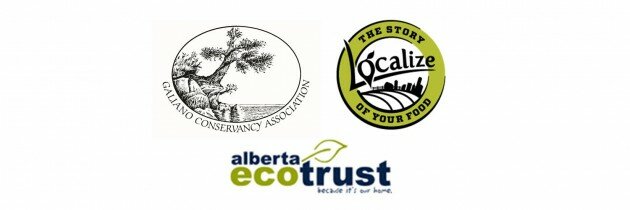SEWF Finance Solutions Lab Recap, Day 2
The Finance Solutions Labs brought together an array of leaders in social innovation and fellow SEWF attendees to provide support to organizations as they bring their system-changing initiative to fruition.
Not only did fellow SEWF attendees get a chance to help in the solutions, they were able to learn from the process and apply those insights to their own work.
SEWF 2013 asked representatives from Finance for Good to report on the Social Finance Labs. This article was written by Justin Bertagnolli, Chief Development Officer, Finance for Good.
For the six organizations who took part in the Finance Solution Labs, the Social Enterprise World Forum (SEWF) was more than just an exceptional opportunity to network and share best practices; it was a chance to pressure test organizational, system level change with global thought leaders.
On Friday October 4th, the Galiano Conservancy Association, Localize Services Ltd., and Alberta Ecotrust took part as feature organizations for the second day of the Labs. Each organization gained input from Lab Experts and SEWF attendees on how to move forward with their organizations biggest current projects and challenges.
While the specifics of the challenges were all unique in their own ways, it was interesting to see the central theme of all groups revolved around how to best expand to meet the needs of their clients. The resounding message that all feature organizations heard from those in the break out groups was to ensure that the focus of the expansion was true to their mission statements.
Let’s take a deeper look at each organization as they all had a unique story to share.
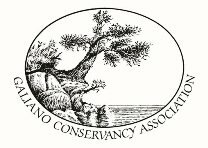 The first group, the Galiano Conservancy Association (GCA), sought advice on developing their Learning Centre. Working with at-risk, inner-city youth who may never otherwise have the opportunities to venture outside of their immediate neighbourhoods, the Learning Centre provides a place to explore and experience the natural world. The project is a huge undertaking for them and they recognize that there are many steps of varying sizes to be taken before realizing the full potential of the centre.
The first group, the Galiano Conservancy Association (GCA), sought advice on developing their Learning Centre. Working with at-risk, inner-city youth who may never otherwise have the opportunities to venture outside of their immediate neighbourhoods, the Learning Centre provides a place to explore and experience the natural world. The project is a huge undertaking for them and they recognize that there are many steps of varying sizes to be taken before realizing the full potential of the centre.
The model the GCA is pursuing will be a social enterprise that allows for a sustainable funding stream to grow. By generating revenue from those that can afford to participate in their centre at a market cost, they are able to subsidize the costs for those who cannot. The model of sustainable community living using green technology and infrastructure requires a lot of decisions on prioritization in order to provide revenue to grow while maintaining a primarily educational focus.
Those sharing the conversation in the Lab session focused heavily on making sure that the GCA was focusing on the portions of the centre that were mission driven, thus allowing for a source of revenue and increased program capacity. The agreed upon next step, which is now on the radar of the organization, is to focus on building up their camping area first. This emphasis will allow for sustainable growth during the intermediary stages of development and meet the mission of increased capacity to share this natural experience with underserved youth.
The final take away was a strong reinforcement by those at the table to pursue a well-developed business plan. The GCA has been working from an existing, yet simple, business case to guide their planning and fundraising for the centre, but developing a robust business case will be an important next step towards their long term growth planning.
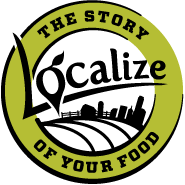 The second organization, Localize Services Ltd., is an organization that brings a shelf labeling service to grocery stores to identify and highlight local food products that shoppers can engage with. Taking the company from roughly 50 stores and growing nationally with goals of over 1000 stores requires a lot of capital and thoughtfulness. The Lab session provided a space where founder Meghan Dear was able to tackle some tough questions about company growth.
The second organization, Localize Services Ltd., is an organization that brings a shelf labeling service to grocery stores to identify and highlight local food products that shoppers can engage with. Taking the company from roughly 50 stores and growing nationally with goals of over 1000 stores requires a lot of capital and thoughtfulness. The Lab session provided a space where founder Meghan Dear was able to tackle some tough questions about company growth.
Through an innovative, yet simple, 10 point scale, Localize Services review local products and assign grades based on criteria such as the use of local ingredients, company ownership, and production processes. The vendor is required to be completely honest about their products in order to maintain access to the service. The grocery store benefits by being able to quantify how local a product is which meet the growing demands of shoppers of grocers to support local businesses in their product offerings. Growing the number of vendors and businesses has a snowballing effect on local community impact – a mission that Localize focuses on building capacity for.
One of the risks Meghan sees, however, is that funders may have differing values and goals for the growth and end up changing what Localize is about. The current service is a wonderful way for local suppliers, growers, and producers to showcase just how local their products are, so it is important not to lose sight of the service acting as a catalyst to support local industry. The responses from the Lab were to be selective with your funders to ensure they were on board with the culture and vision of the social enterprise. A strong business model that generates a profit will always garner financial interest, so spend time finding those who share your mission.
In the end, it was very exciting to have Meghan come back to the Labs in the afternoon with additional funding towards her growth plans, having won the social enterprise pitch competition. She was very humble about the win and even attributed her ability to answer some of the final round of questions with additional thoughtfulness to the challenging questions that were asked earlier that morning in the Lab.
 The third organization was Alberta Ecotrust. As an organization, they invest in the people and projects that enable Alberta to be a stronger and more environmentally sustainable community. Ecotrust brought forward their project of building a collaborative co-space for the organizations that they support. A co-space owned by Ecotrust would allow for collaborative cross-pollination of ideas for their clients, aid in avoiding high rental costs in Calgary, and work in a more environmentally sustainable building.
The third organization was Alberta Ecotrust. As an organization, they invest in the people and projects that enable Alberta to be a stronger and more environmentally sustainable community. Ecotrust brought forward their project of building a collaborative co-space for the organizations that they support. A co-space owned by Ecotrust would allow for collaborative cross-pollination of ideas for their clients, aid in avoiding high rental costs in Calgary, and work in a more environmentally sustainable building.
The main challenge at this table was determining the best approach for the shared space. Decisions such as whether to build new or buy, how much green technology the building should use, how large of a space and what capacity should exist, and what types of shared spaces should be incorporated to promote collaboration were all brought up. The Lab group also asked tough questions on what other methods were available to achieve similar results without the co-space.
Fundamentally, the focus of the conversation shifted to their mission statement, as it had with the other groups, and how this space was furthering their purpose. Given the experience in the room, the group recommended against the “if you build it, they will come” mentality, noting that many similar projects are having a tough time filling their co-spaces with permanent tenants. The idea thus shifted to a smaller number of permanent spaces while ensuring that at the heart of the project was effective collaborative event spaces that can act as hubs of innovation.
The hub space with fewer permanent spaces accomplishes their goals and remains true to their mission. It allows for ownership and control over rental costs, the support of organizations to come together for innovation via the event space, and it provides opportunities to support a handful of emerging environmental organizations through the permanent co-space.
Overall, the three organizations’ outcomes highlighted the growth challenges that all groups face during their existence, be they traditional enterprise or social enterprise. Being profitable is important in any sustainable business model but the stabilizing element that sets social enterprises apart is their impact-driven mission statement. Their mission statement needs to be at the top of their mind when considering growth and expansion of their operational capacity. It is easy to get caught up in the excitement and visions of what growth can bring, but in order to accelerate impact it is often very important to slow down and ensure that the changes are true to the organizational mission.
I find that one of the most invigorating and encouraging parts of being in the social enterprise space is the level of support and collaboration to deliver impact in the community. The energy and passion that everyone who attended the Labs brought to their respective tables was palpable, and without hesitation they shared their experiences and knowledge to help out these organizations.
The final message I am reminded through the Labs is that you never walk alone in the social sector. The honest willingness to help or connect one another is one of the greatest assets that we have.
I really look forward to keeping an eye out for how each of these organizations take the lessons learned from these sessions and build something special in their communities. For more information on each organization, take a tour through their websites and get involved.
If you are interested in hearing more about any particular project and its development, feel free to visit their websites:
More About Finance For Good & Justin Bertagnolli
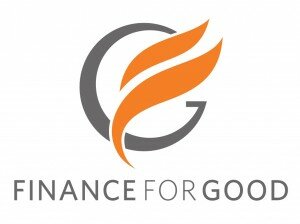 Finance for Good was founded to empower social service providers to address the root cause of social issues through the use of social impact bonds. Social impact bonds enable an investment in prevention, and we believe that focusing on prevention will lead to sustainable, positive impacts in our communities. To bring SIBs to Canada we built the first, and only, social impact bond intermediary in Canada.
Finance for Good was founded to empower social service providers to address the root cause of social issues through the use of social impact bonds. Social impact bonds enable an investment in prevention, and we believe that focusing on prevention will lead to sustainable, positive impacts in our communities. To bring SIBs to Canada we built the first, and only, social impact bond intermediary in Canada.
Solving some of the toughest problems requires collaboration with all stakeholders – governments, front-line service providers, investors, those in need, and the local communities in which we live. Finance for Good builds the tools, processes, and partnerships required to connect these stakeholders and implement new social programs in the community.
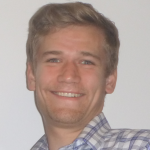 Justin is Co-founder and Chief Development Officer for Finance for Good, a social finance intermediary. Working with government, service providers, and impact investors, he builds Social Impact Bond (SIB) readiness capacity in the sector through activities such as multi-stakeholder SIB working groups, feasibility assessment workshops, and educational sessions. Justin earned a Bachelor of Engineering from the University of Alberta where he was honored to be Canada’s International Relations Commissioner as part of the Canadian Federation of Engineering Students. In his free time, Justin is a passionate chef and enjoys playing team sports.
Justin is Co-founder and Chief Development Officer for Finance for Good, a social finance intermediary. Working with government, service providers, and impact investors, he builds Social Impact Bond (SIB) readiness capacity in the sector through activities such as multi-stakeholder SIB working groups, feasibility assessment workshops, and educational sessions. Justin earned a Bachelor of Engineering from the University of Alberta where he was honored to be Canada’s International Relations Commissioner as part of the Canadian Federation of Engineering Students. In his free time, Justin is a passionate chef and enjoys playing team sports.




